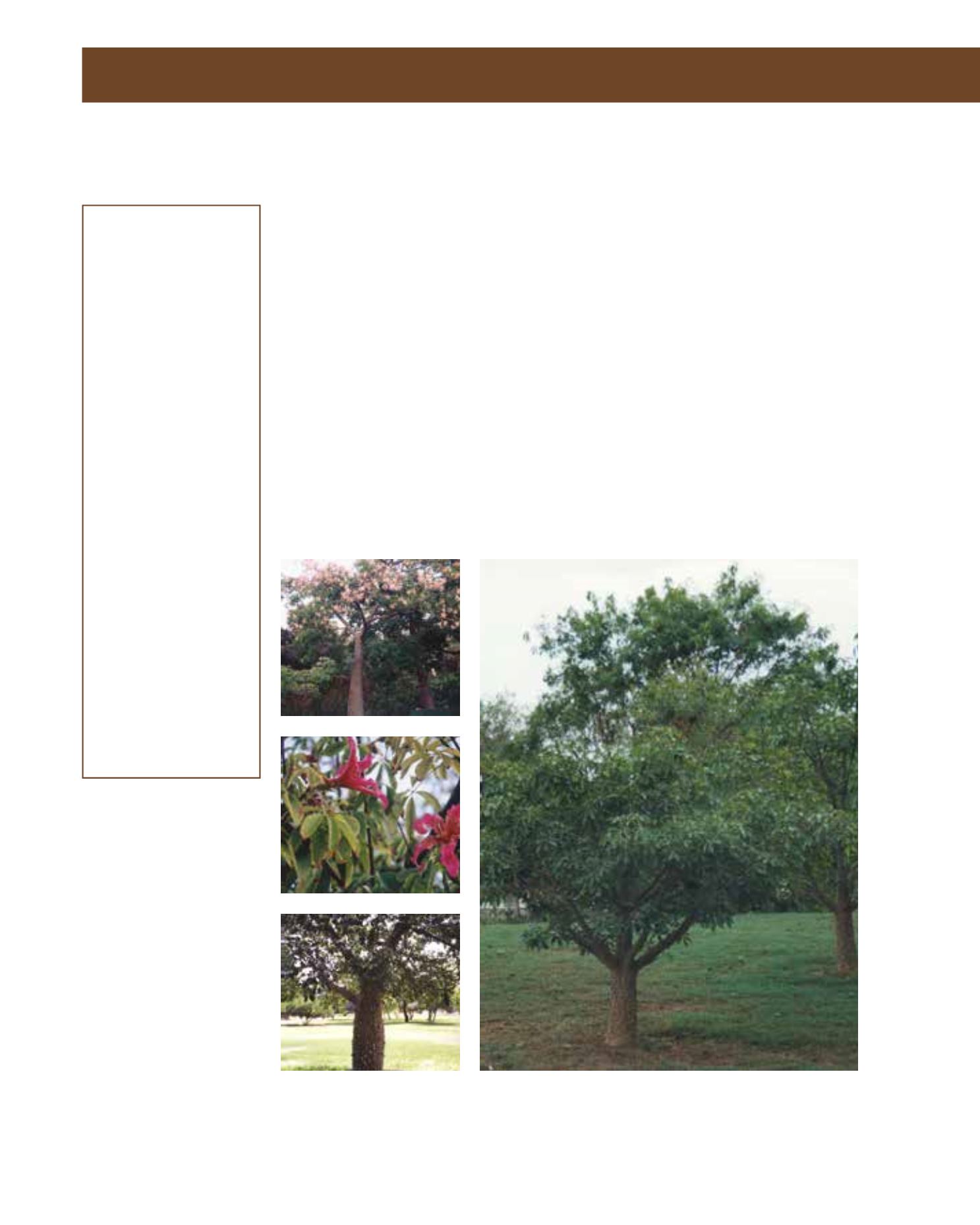

GENERAL
Origin
:
Mediterranean,
sub-tropical,
tropical
Humidity
:
semi-arid, semi-
humid, very
humid
Propagation :
sowing and
pricking out
Maintenance :
moderate
CONDITIONS
Urban climate :
vulnerable
Dessication :
vulnerable
Stagnant water :
vulnerable
Irrigation
:
medium
Salinity/ppm :
moderate (2500
ppm)
Hardiness
:
-6°C
SHAPE
Type
:
tree
Height
:
6 m-18 m
Spread
:
8 m-15 m
Foliage
:
deciduous
FLOWER
Colour
:
white, pink,
magenta, purple,
violet
Size
:
10 cm - 16 cm
Period
:
October -
December
FRUIT
Type of fruit :
capsule
Fruit size
:
20 cm
Toxicity
:
inedible, fruit
Floss-Silk Trees are large, winter-deciduous trees, native to subtropical South America, and tole-
rate some frost to about –7°C, when mature. Young trees are more sensitive to cold. They grow
to about 18 metres high and about 9 metres wide with horizontal but gnarled branches that shed
the palmate foliage in autumn. They are composed of five to seven oval leaflets. After the leaves
have fallen, showy pink flowers with curved petals are borne with up to 16 cm in diameter. They
are pollinated by butterflies and develop fruits that are reminiscent of small, brown avocados
with woody rind. These split open when ripe to release black seeds that are muffled by white,
cottony fibres. Like those of Silk Cotton Trees (Bombax ceiba), they are used for stuffing pillows.
An edible oil may be obtained from the bean-sized seeds. The dull-green trunk is covered with
grey, conical spines, giving it a decorative feature. It becomes bulky with age in its lower third,
and eventually achieves the shape of a bottle. The green bark performs photosynthesis before it
turns light grey when old. Established trees do well in full sun and require occasional soaking in
summer. Good drainage is important and the soil should be fertile. C. speciosa is a magnificent
specimen tree for parks and courtyards, where it may be protected from frosts. Its interesting
trunk should be admired from close by, and not hidden by shrubs. Maintenance is minimal with
occasional pruning every few years. Floss-Silk Trees are best propagated by seeds.
101
Chorisia speciosa,
Bombacaceae
Floss-Silk Tree
















